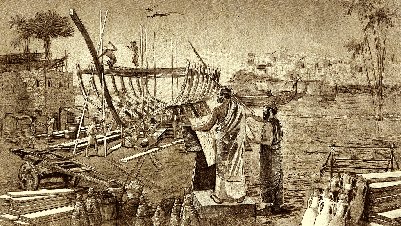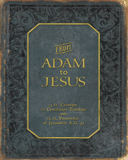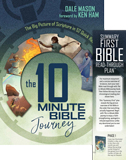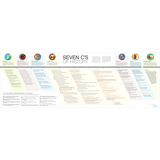Bible Timeline
The Bible provides a reliable history of the universe and the events described in the Bible, particularly in the early chapters of Genesis, providing a framework through which we can interpret science and history.
| Event | Date |
|---|---|
| Creation | 4004 BC |
| The Flood | 2348 BC |
| Tower of Babel | 2242 BC |
| Abraham | 1996 BC |
| Joseph | 1745 BC |
| Moses and the Exodus | 1491 BC |
| David | 1085 BC |
| Monarchy Divides | 975 BC |
| Assyrian Destruction of Israel | 722 BC |
| Babylonian Captivity of Judah | 586 BC |
| Jesus | 4 BC |
Timeline of Creation
The age of the earth is one of the most contentious issues in the creation/evolution debate. In today’s culture, the thought of creation occurring about 6,000 years ago is frequently mocked by non-Christians—and also by many Christians.
Timeline of the Flood
When exactly was the Flood? There are two possible ways of calculating the date. The first is from creation, and the other is from the present.
Do the Genesis Geneologies Have Gaps?
The evidence is strong that the Genesis genealogies are closed. God created Adam on Day Six, approximately 4,000 years before Christ. There does not seem to be any support for the notion that there are gaps in the Genesis genealogies.
Secular History and the Biblical Timeline
How can we reconcile the secular history of the world with what the Bible clearly teaches? Using God's Word as authoritative, we know the pyramids of Egypt couldn't have been built prior to creation. Also, they would not have been built prior to the Flood as they would have been destroyed.
Bible Timeline Topics
-
Ancient Egypt
People often appeal to Egyptian chronologies as proof that man predates the biblical 6,000 years. But Egyptology, when properly understood, confirms the Bible!
-
Bible Genealogy
The genealogies of the Bible are used to construct a biblical chronology and timeline of 6,000 years, but can these genealogies be trusted?
Articles About Bible Timeline
-
Oct. 5, 2016 from Answers in Depth
Did this constellation name and idea originate at the same place and from the same people before being scattered throughout the earth?
-
When Did the Animals Exit the Ark?June 4, 2016 from The Origin of Species After the Flood
If you search Genesis 1–11, you won’t find an explicit time stamp for the disembarking event. So when did the Ark land? When did animals restart their lives?
-
Grappling with the Chronology of the Flood ExcerptMarch 20, 2014
Read an excerpt from the book Grappling with the Chronology of the Flood.
-
Book Chapter7.7 Danger No 7: Loss of Biblical ChronologyJan. 24, 2013 from Did God Use Evolution?
The Bible provides us with a timescale for history. Although not measured by means of atomic clocks, the following dates and facts underlay a proper understanding of the Bible.
-
Feedback ArticleTimeline for the FloodMarch 9, 2012 from Feedback
So when exactly was the Flood? There are two possible ways of calculating the date. David Wright, AiG–U.S., explains.
-
Why Study the Chronology of the Flood?May 27, 2010
In a crucial research project, a team of Hebraists conducted an exhaustive linguistic and literary study of the Hebrew narrative of the Genesis Flood.
-
Oct. 23, 2007 from Answers Magazine
In today’s culture, the thought of creation occurring about 6,000 years ago is frequently mocked by non-Christians—and also by many Christians.
Recommended Resources

Answers in Genesis is an apologetics ministry, dedicated to helping Christians defend their faith and proclaim the good news of Jesus Christ.
- Customer Service 800.778.3390
- Available Monday–Friday | 9 AM–5 PM ET
- © 2025 Answers in Genesis









